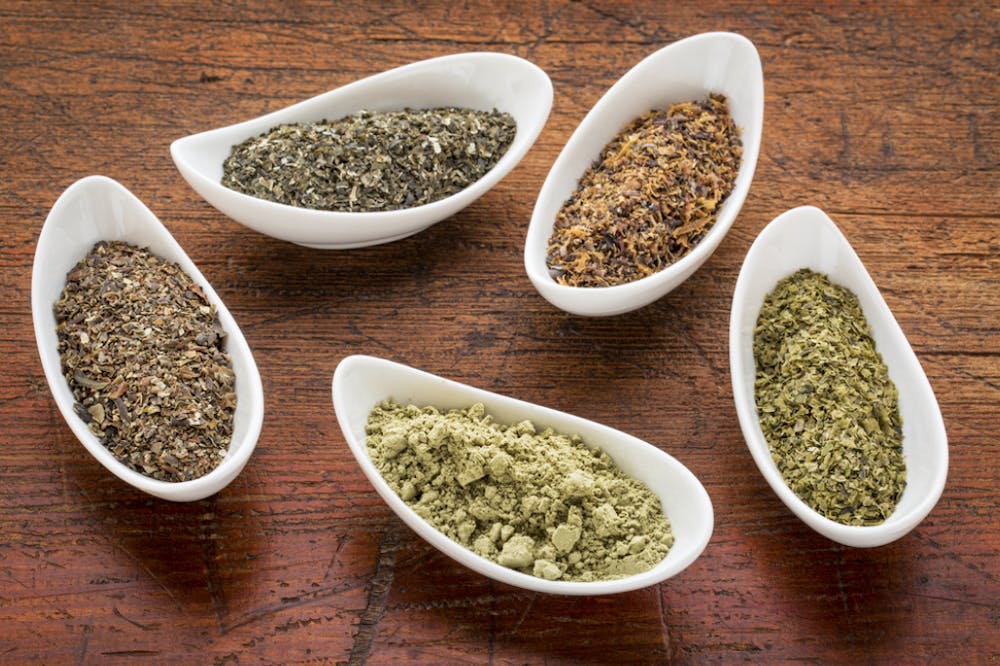What is Sea Moss?
Sea moss is a kind of seaweed, also known as algae, that grows in oceans worldwide. Sea moss, commonly known as Irish sea moss, is scientifically known as Chondrus crispus, a species of algae and seaweed. A major reason for its popularity is its phenomenal nutrient density. It's been used in certain cultures and regions for hundreds of years, but it's recently become popular in the United States. Algae and seaweed have been used medicinally and for culinary purposes for many years. Throughout the Atlantic Ocean between North America and Europe, sea moss grows along rocky coasts. Other types of seaweed and algae, including sea moss varieties, grow in warmer ocean waters in the Caribbean, South America, Asia, and Africa.
Is Sea Moss Good for You?
Sea Moss is One of the Best Heart-Healthy Foods
The main reason for this is that it contains omega-3 fatty acids. Omega-3 fatty acids are associated with a lower risk of cardiovascular disease, according to research. In addition, it contains a large amount of fiber per serving.
Sea Moss is a Powerful Immune-Boosting Food
The best sea moss has very high levels of prebiotics. In our gut, probiotics are active, beneficial bacteria that fight disease. In order to thrive, probiotics require prebiotic fiber. Sea mosses also contain fatty acids, polyphenols, carotenoids, complex polysaccharides, and live bacteria, all of which contribute to a healthy intestinal flora.
Sea Moss is an Excellent Source of Iodine
The human body needs iodine to produce thyroid hormones (the hormones that regulate metabolic processes). An iodine deficiency can cause fatigue, weakness, and constipation. A gram of sea moss contains about 47 milligrams of iodine.
Sea Moss Contributes to Muscle Health, Recovery, and Function
Sea moss is rich in an amino acid called taurine, which helps heal and recover muscle micro-tears. Additionally, sea moss contains a significant amount of magnesium, a mineral essential for the contraction and relaxation of muscles. Two tablespoons of sea moss contain about 14.4mg of magnesium.
Sea Moss Provides Several Skin Health Benefits When Applied Topically
Sea moss contains a high amount of sulfur. Sulfur is a naturally occurring mineral with powerful antibacterial properties. Applying it topically to the skin can aid in the absorption of excess oil, which can lead to acne or blemishes. Sulfur is also keratolytic, which means it breaks down the outer skin layer, thus serving as an exfoliant.
Things to Consider When Shopping for Sea Moss
How Does it Look?
How does your sea moss look? Is it all around the same size and thickness? The growth of sea moss is distinct. By looking at the product, you can tell whether it was grown in a pool or harvested from the ocean. It's kind of like telling the difference between homegrown or organic vegetables and store-bought vegetables. Ocean-grown sea moss will be thicker in some places than others. Additionally, the thallus will vary in length and density.
Is it Salty?
Surface salt will naturally occur, but the size of the salt grains and the taste reveal which moss is authentic. Sea moss absorbs salt water as it grows. Consequently, when it dries, this appears on the surface. Is your sea moss lightly dusted with fine salt, similar to icing sugar? It is probably not real if the salt grains look more like rock salt or table salt.
Is There Other Seaweed With It?
Sea moss grown in the ocean occasionally contains stray pieces of another type of seaweed.
Seaweed that has been entangled with the sea moss crop is then picked out after harvesting. Sea moss may still have a few whispy, but they are rare. Aside from sea moss, there are no other species of seaweed in pools and tanks. In addition, pools lack sand and 'sea dirt,' as found on sea moss, so you can easily tell the real from the fake.
Is There a Difference in Color or Tone?
Sea moss that has grown naturally in the ocean may have some color variations or slight tonal differences. This tip will help you identify fake sea moss easily. Seaweed grown naturally has tonal differences. Sea moss with exactly the same color may be fake or, worse, bleached. The color of sea moss naturally varies. The golden white color results from some processing. Sunlight is typically used in this process. After sun-drying, sea moss can often exhibit tonal variations depending on its color. Whenever sea moss has been bleached, it has a uniform white appearance. You won't find any slightly darker patches, which look very processed.


